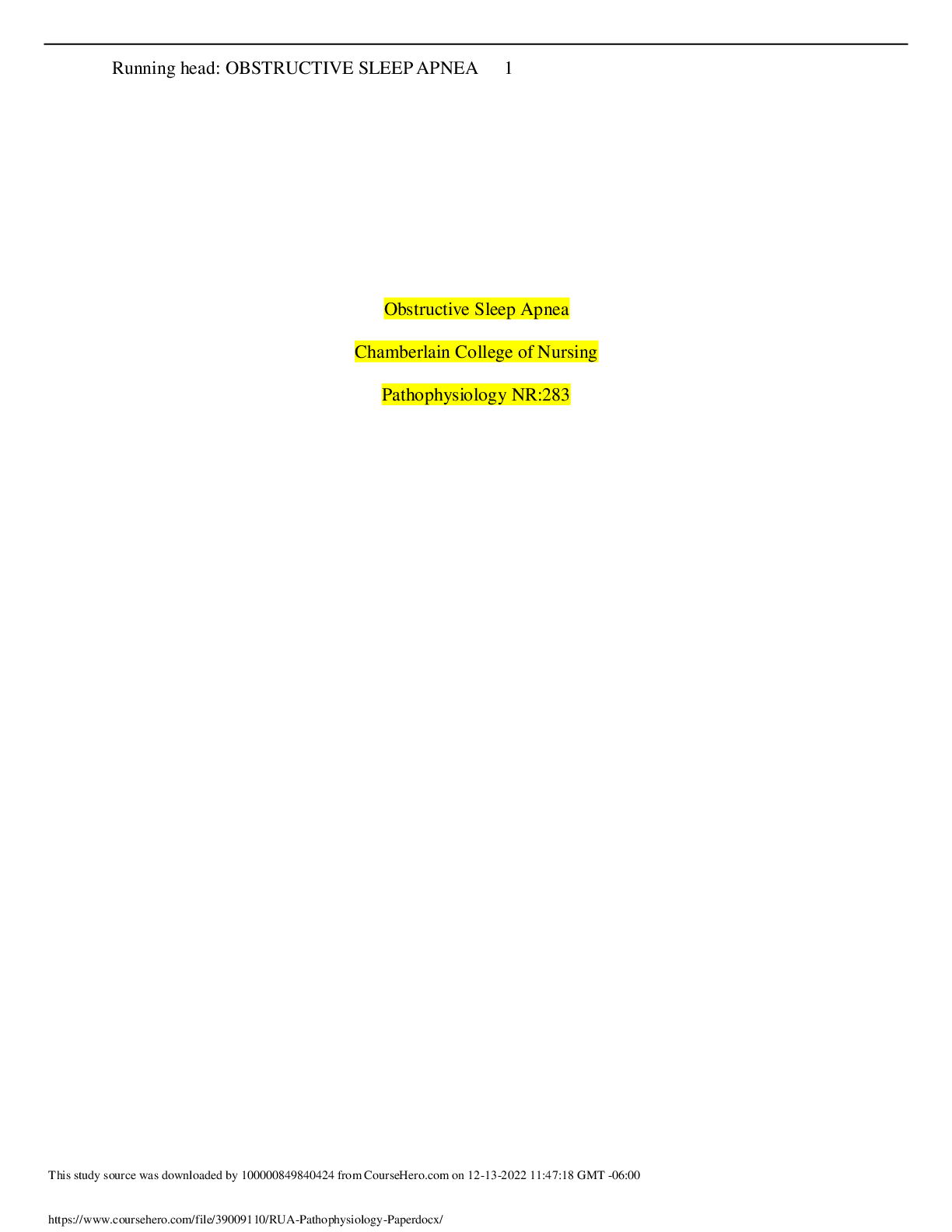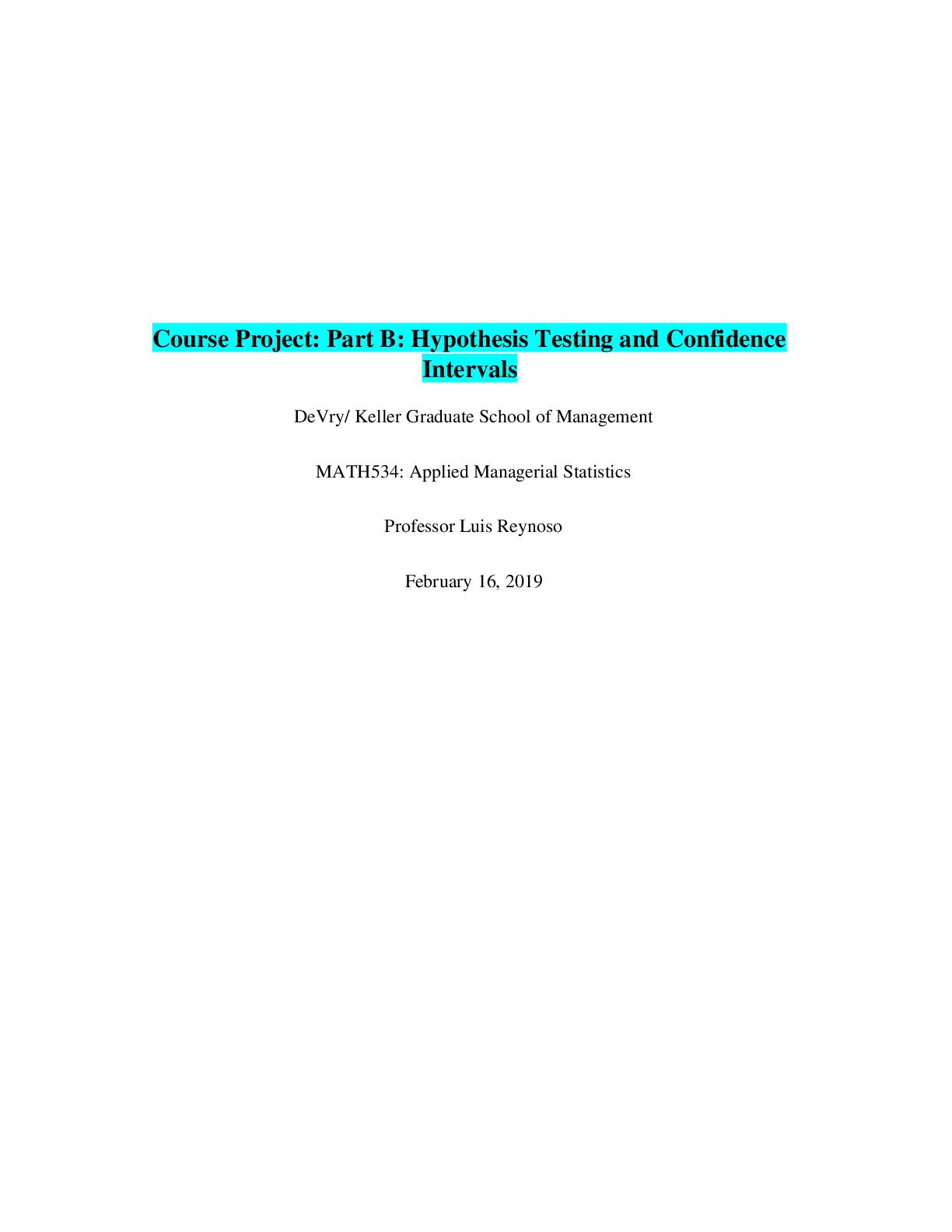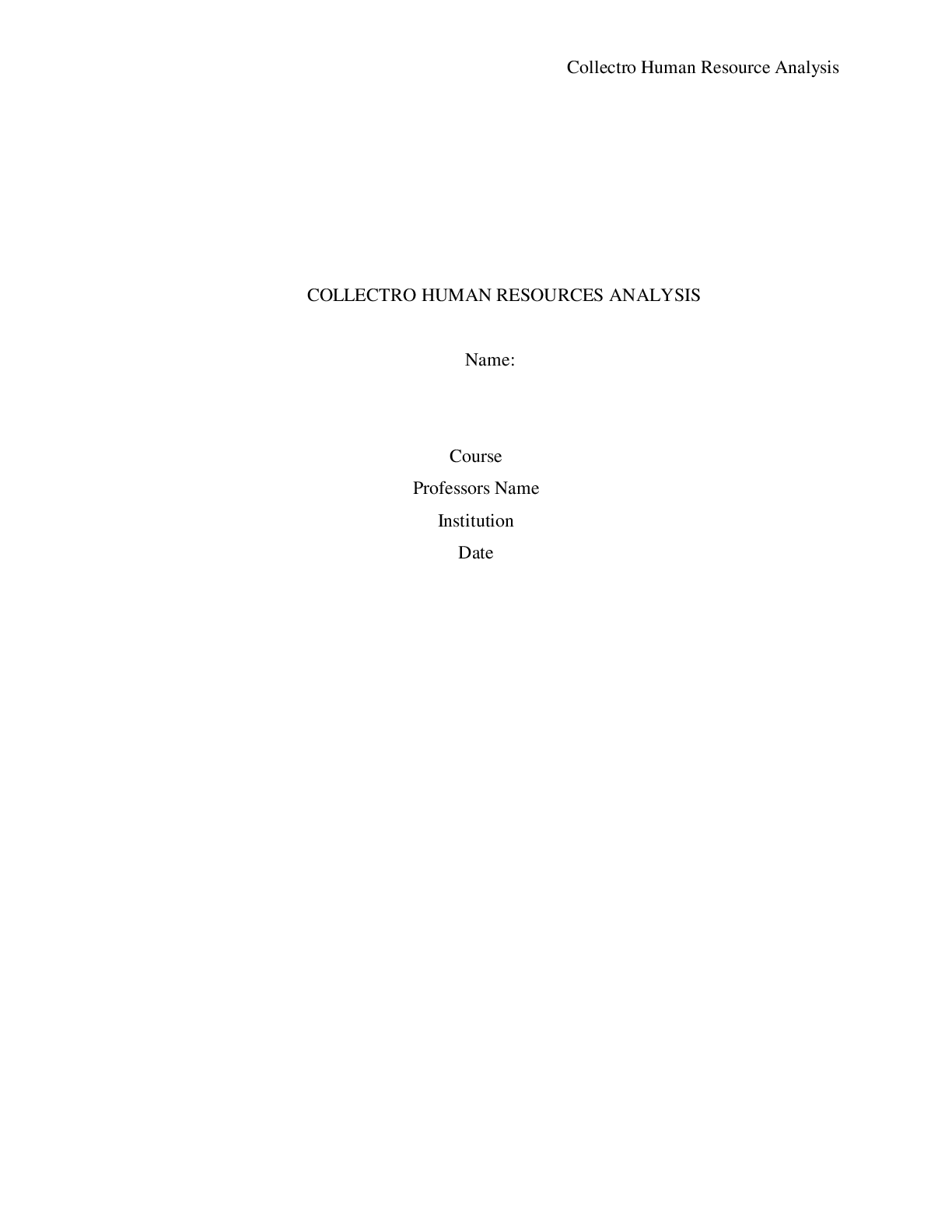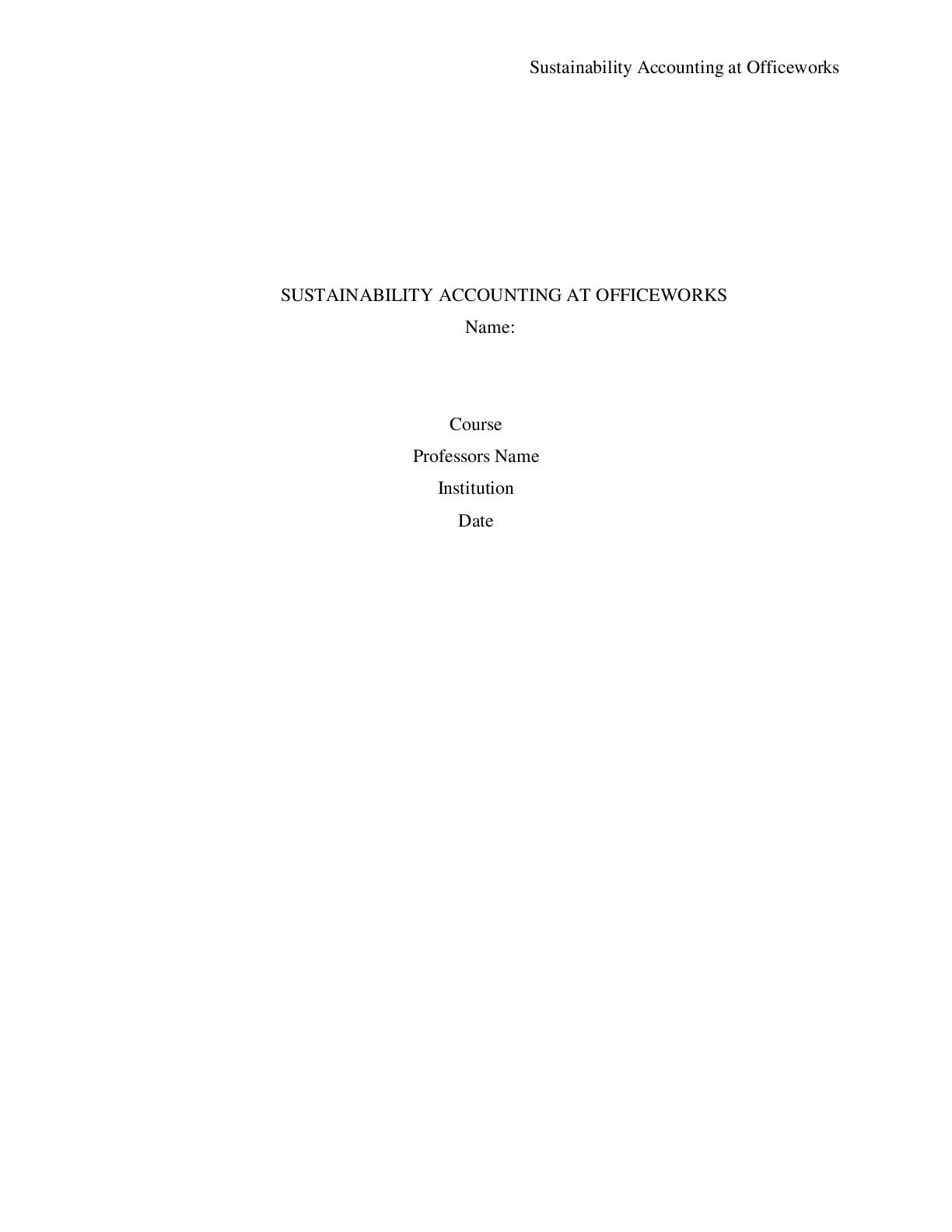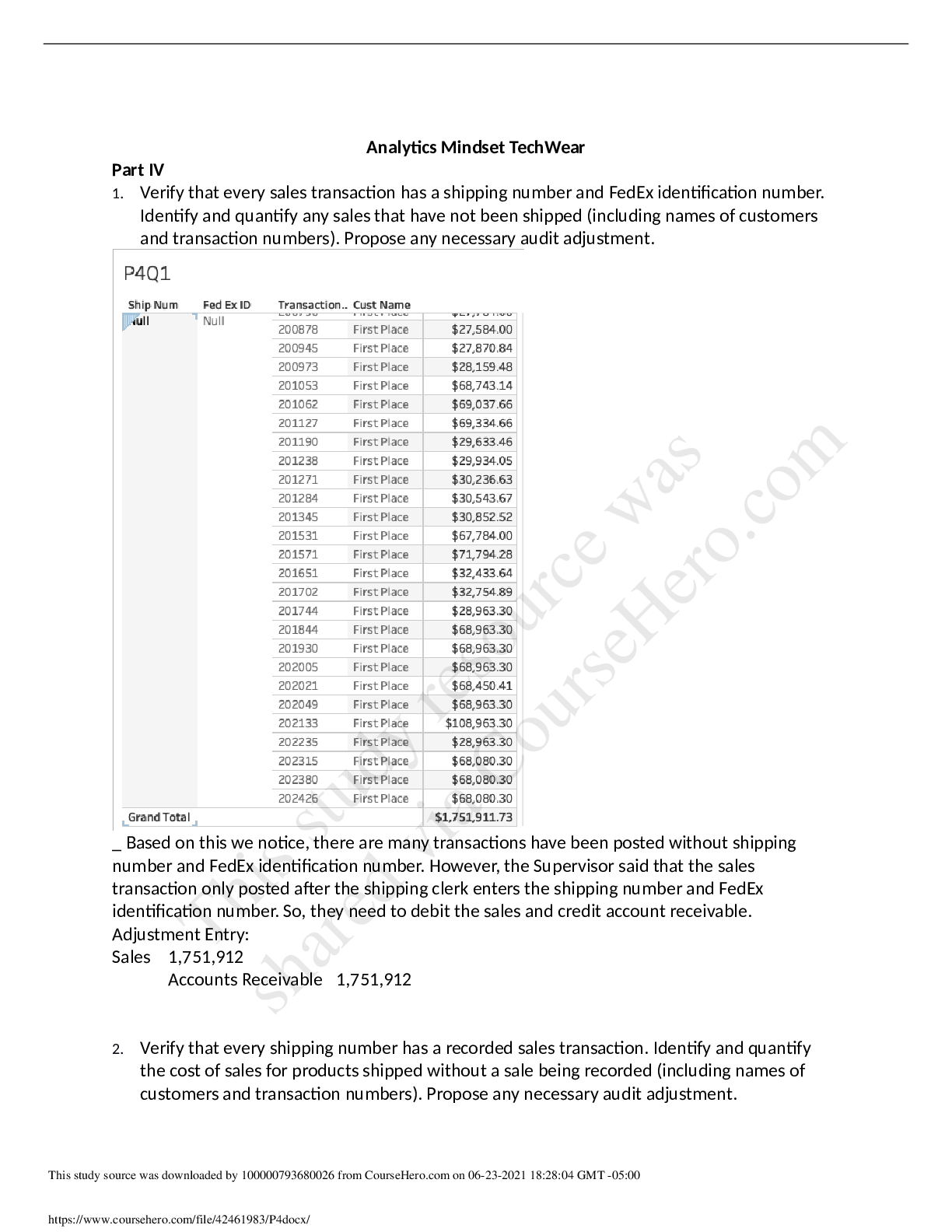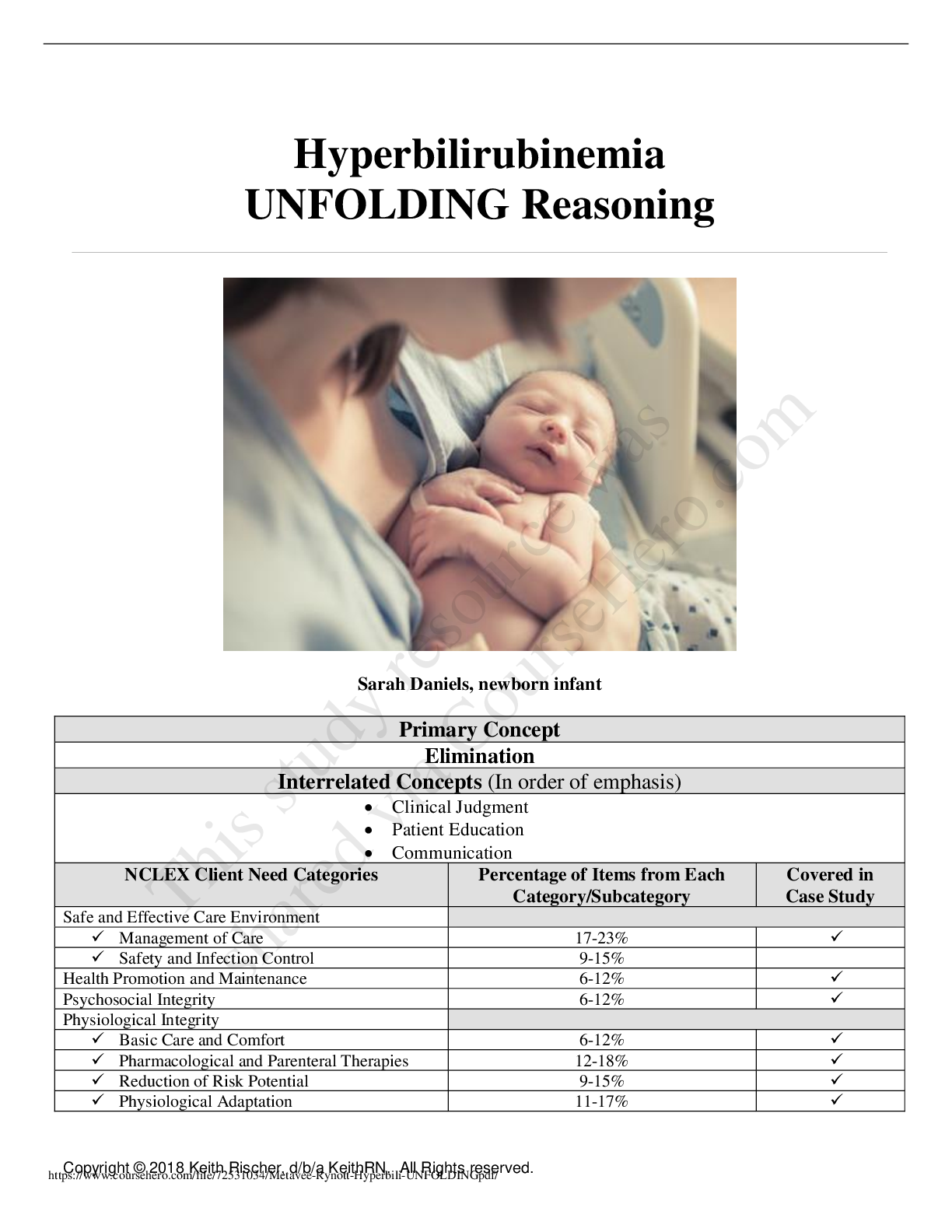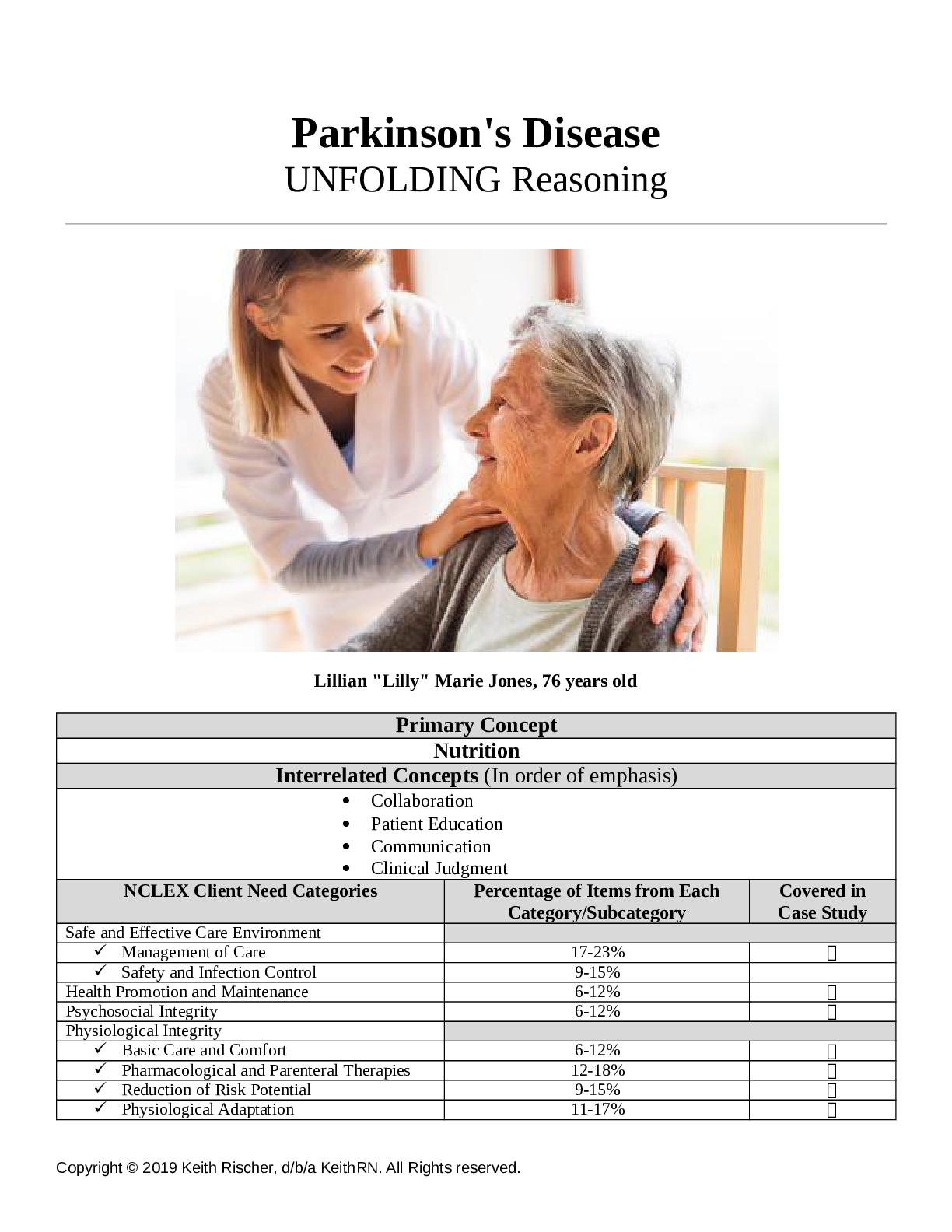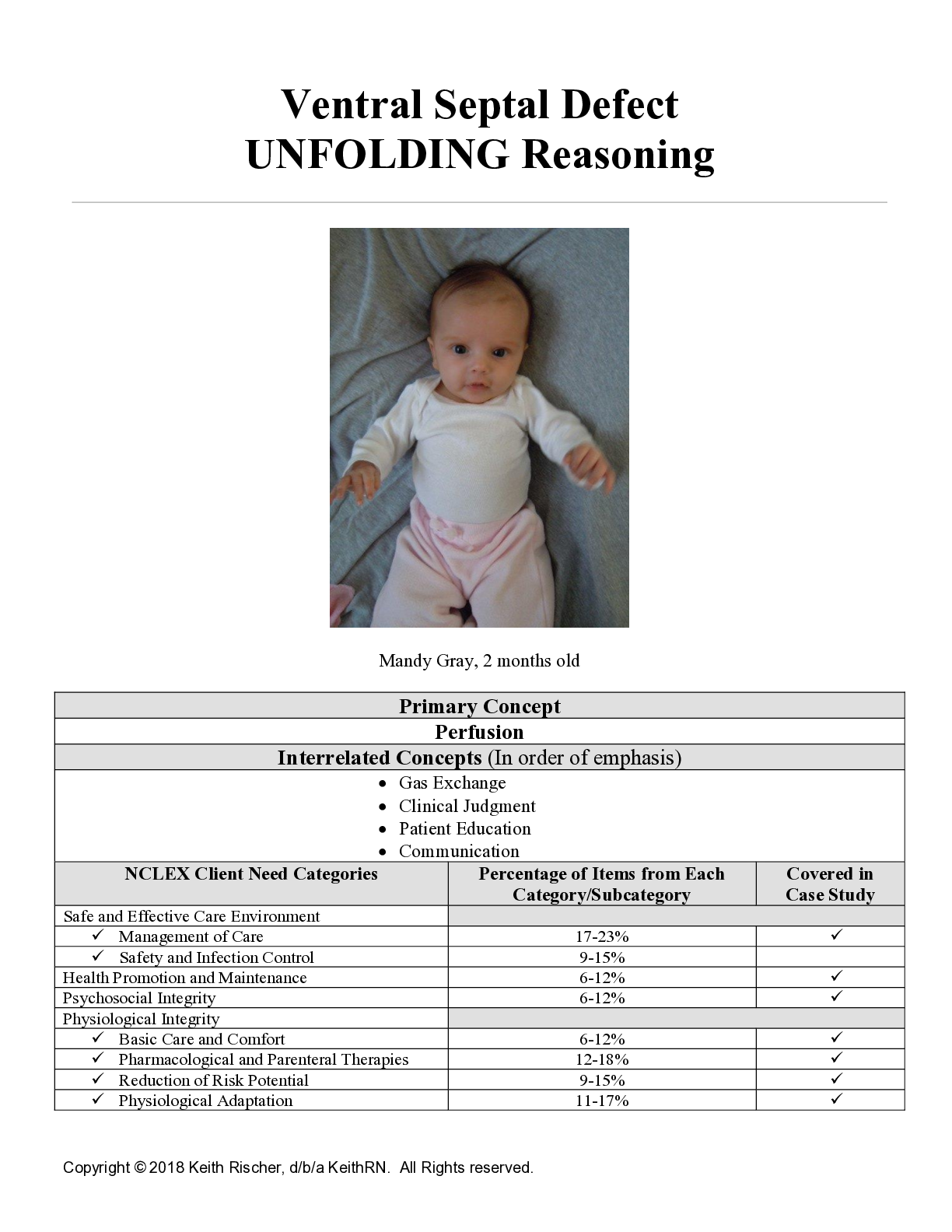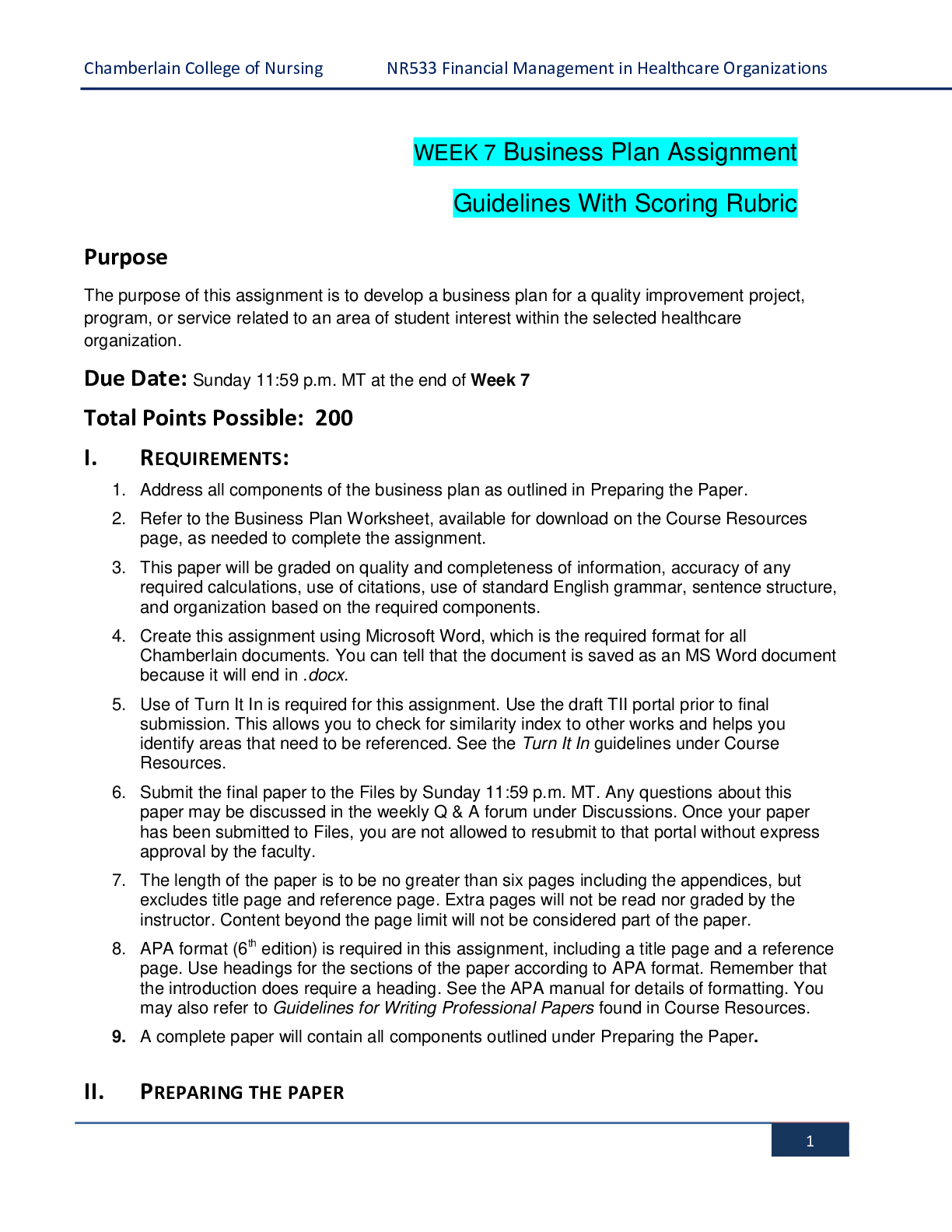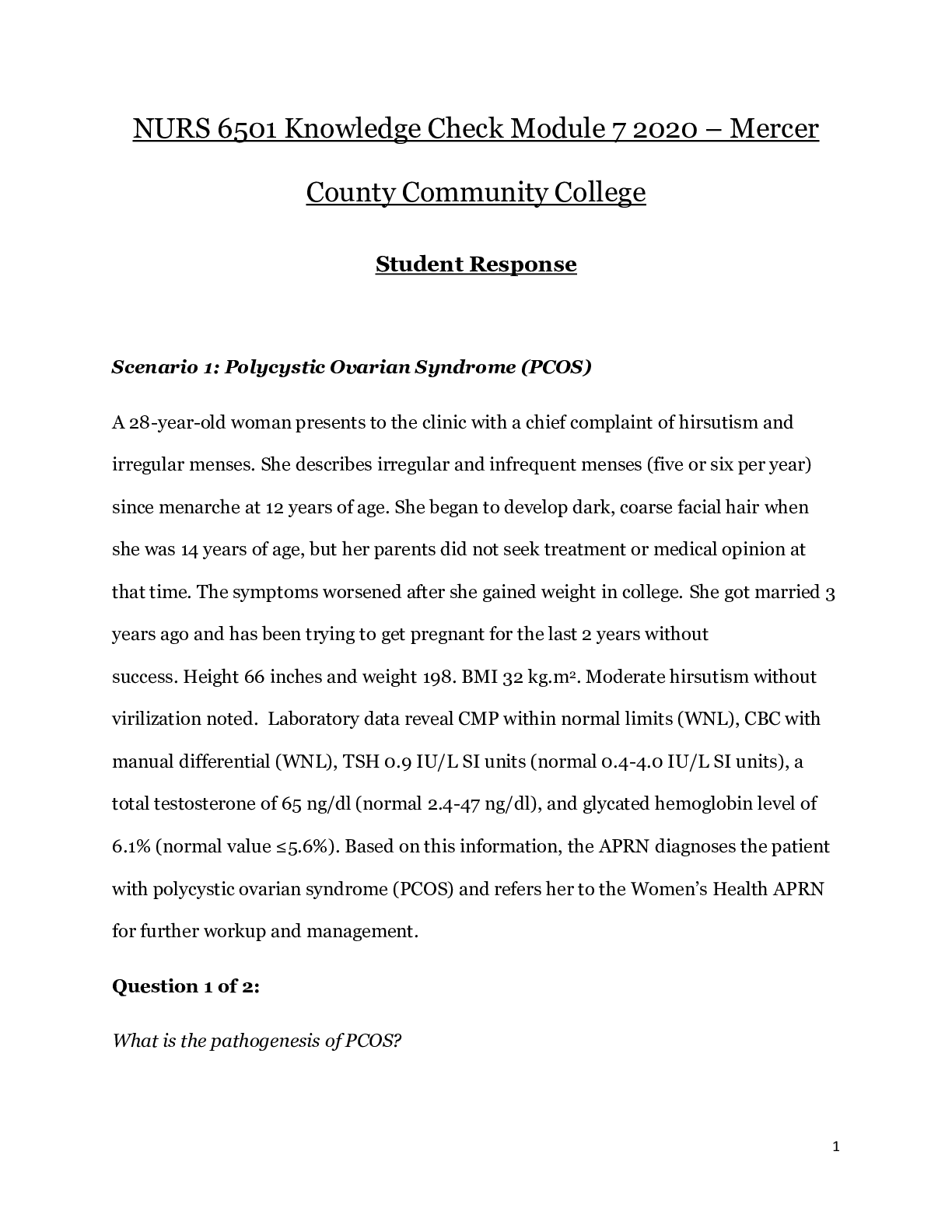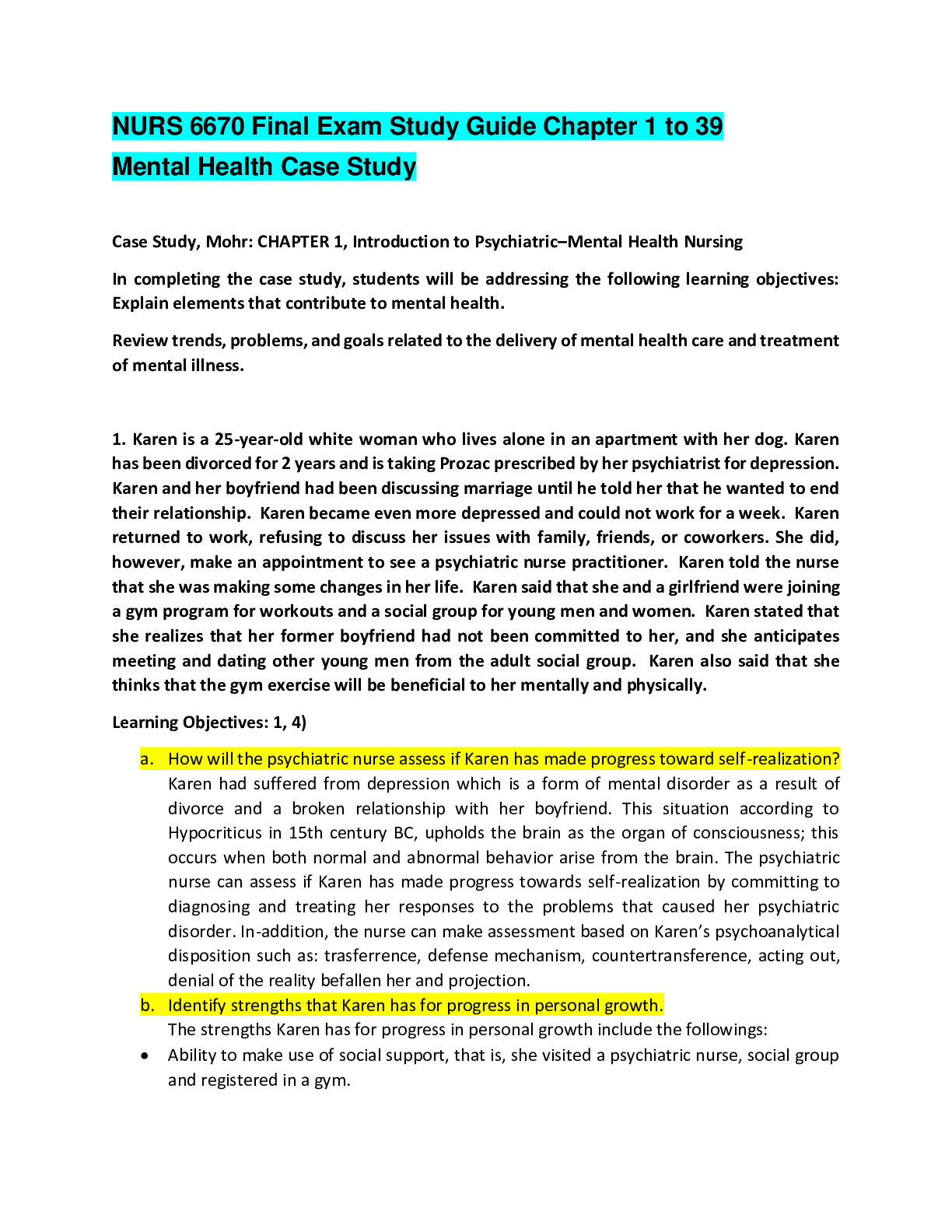Pathophysiology > CASE STUDY > (CASE STUDY) NR-283 Week 6 RUA: Pathophysiological Processes Guidelines: Sickle Cell Anemia in Afric (All)
(CASE STUDY) NR-283 Week 6 RUA: Pathophysiological Processes Guidelines: Sickle Cell Anemia in African Countries
Document Content and Description Below
Sickle Cell Anemia Chamberlain College of Nursing NR 283: Pathophysiology Sickle Cell Anemia Approximately 60 % of individuals w... ith Sickle Cell Anemia live in Sub Saharan Africa. Each year about 300,000 infants are born with major hemoglobin disorders- including more than 200,000 cases of Sickle Cell Anemia in Africa. (Munube et al., 2016). Sickle Cell Anemia is a common genetic condition due to a hemoglobin (Hb) disorder inheritance of mutant hemoglobin genes from both parents. Normally, your red blood cells are flexible and round, moving easily through your blood vessels but with sickle cell anemia, the red blood cells become rigid and sticky and are shaped like sickles or crescent moons. The irregular shaped cells can get stuck in blood vessels and can slow or block blood flow of blood and oxygen to parts of the body. There's no cure for sickle cell anemia but there are treatments that can relieve pain and help prevent further problems associated with sickle cell anemia. In my paper I will be discussing the etiology, pathophysiological processes, clinical manifestations, complications, and diagnostics. Etiology and Risk Factors Cells in tissues need a steady supply of oxygen to function. Hemoglobin in red blood cells takes up oxygen in the lungs and carries it to all the tissues of the body. Red blood cells that contain normal hemoglobin are disc shaped that allows the cells to be flexible so that they can move through large and small blood vessels to deliver oxygen. When someone has sickle cell anemia the cell can form stiff rods within the red cell, changing it into a crescent, or sickle shape. Sickle-shaped cells are not flexible and can stick to vessel walls, causing a blockage that slows or stops the flow of blood. When the vessels walls get blocked there is a low or no supply of oxygen to the tissues. In the United States, most people with sickle cell anemia are of African ancestry or identify themselves as black. About 1 in 13 African American babies is born with sickle cell trait. About 1 in every 365 black children is born with sickle cell disease. There are also many people with this disease who come from Hispanic, southern European, Middle Eastern, or Asian Indian backgrounds. Approximately 100,000 Americans have Sickle Cell Anemia. A genetic problem causes sickle cell anemia. People with the disease are born with two sickle cell genes, one from each parent. If you only have one sickle cell gene, it's called sickle cell trait. Pathophysiological Processes The specific gene mutation that results in sickle hemoglobin involves a substitution of thymine for adenine on the sixth codon of the genetic sequence. The genetic alteration changes the physical properties of the hemoglobin cells changing their shape. Sickle cell disease is an inherited condition that is autosomal recessive. (Smith, 2016) This means that males and females are affected equally and both parents must carry a gene mutation, even if they are asymptomatic, for the child to be affected. When both parents carry a single gene mutation, known as sickle cell trait, there is a 25% chance that the disease will develop, 25% chance that the child will be unaffected and a 50% that they will possess a gene mutation as an asymptomatic carrier. Clinical Manifestations and Complications and Diagnostics Sickle cell anemia can lead to Stroke, acute chest syndrome, pulmonary hypertension, organ damage, blindness, skin ulcers, gallstones, Priapism. A stroke can occur if sickle cells block blood flow to an area of your brain. Signs of stroke include seizures, weakness or numbness of your arms and legs, sudden speech difficulties, and loss of consciousness. A stroke can be fatal. “A child with Sickle cell anemia has a stroke risk that is 333 times greater than that of a healthy child without Sickle cell anemia or heart disease.” (Munube et al., 2016) Acute chest syndrome is a life-threatening complication of sickle cell anemia causes chest pain, fever and difficulty breathing. Acute chest syndrome can be caused by a lung infection or by sickle cells blocking blood vessels in your lungs. It may require emergency medical treatment with antibiotics and other treatments. Pulmonary hypertension can develop due to high blood pressure in their lungs. Pulmonary Hypertension complication usually affects adults rather than children. Shortness of breath and fatigue are common symptoms of this condition, which can be fatal. (Huether, S. pg.688,2017) Sickle cells can block blood flow through blood vessels that can lead to organ damage because it deprives a organ of blood and oxygen. In sickle cell anemia, blood is also chronically low on oxygen. Chronic deprivation of oxygen-rich blood can damage nerves and organs in your body, including your kidneys, liver and spleen. Organ damage can be fatal. Sickle cell anemia can cause damage to the retina in the eye leading to blindness. Sickle cell anemia can cause open sores, called ulcers, on your legs. Red blood cells produce a substance called bilirubin with sickle cell anemia there is an increase of bilirubin that can lead to gallstones. In men with sickle cell anemia that may experience painful, long lasting erections known as priapism. Priapism can occur in other parts of the body, sickle cells can block the blood vessels in the penis. This can damage the penis and eventually lead to incapacity. To determine if someone has Sickle Cell Anemia a blood test can check for hemoglobin S. In the United States, this blood test is part of routine newborn screening done at the hospital. But older children and adults can be tested, too. (Mayo Clinic Staff, 2016) In adults, a blood sample is drawn from a vein in the arm. In young children and babies, the blood sample is usually collected from a finger or heel. The sample is then sent to a laboratory, where it's screened for hemoglobin S. If the screening test is negative, there is no sickle cell gene present. If the screening test is positive, further tests will be done to determine whether they have one or two sickle cell genes present. People who have one gene have the sickle cell trait and have a small percentage of hemoglobin S. People with two genes sickle cell anemia have a much larger percentage of the defective hemoglobin. To confirm any diagnosis, a sample of blood is examined under a microscope to check for large numbers of sickle cells. If you or your child has the disease, a blood test is done to check for anemia. If you or your child carries the sickle cell gene, you may be referred to a genetic counselor. Sickle cell disease can be diagnosed in an unborn baby by sampling some of the amniotic fluid to look for the sickle cell gene. References Munube, D., Katabira, E., Ndeezi, G., Joloba, M., Lhatoo, S., Sajatovic, M., & Tumwine, J. K. (2016). Prevalence of stroke in children admitted with sickle cell anemia to Mulago Hospital. BMC Neurology, 161-6. doi:10.1186/s12883-016-0704-2 Staff, B. M. (n.d.). Sickle cell anemia. Retrieved October 16, 2016, from http://www.mayoclinic.org/diseases-conditions/sickle-cell-anemia/basics/tests- diagnosis/con-20019348 Smith, Y. (2015). Sickle-Cell Disease Pathophysiology. Retrieved October 16, 2016, from http://www.news-medical.net/health/Sickle-Cell-Disease-Pathophysiology.aspx Huether, S (2017). Understanding Pathophysiology. Elsevier 2017 [Show More]
Last updated: 1 year ago
Preview 1 out of 6 pages
 (1).png)
Reviews( 0 )
Document information
Connected school, study & course
About the document
Uploaded On
Jun 23, 2022
Number of pages
6
Written in
Additional information
This document has been written for:
Uploaded
Jun 23, 2022
Downloads
0
Views
77



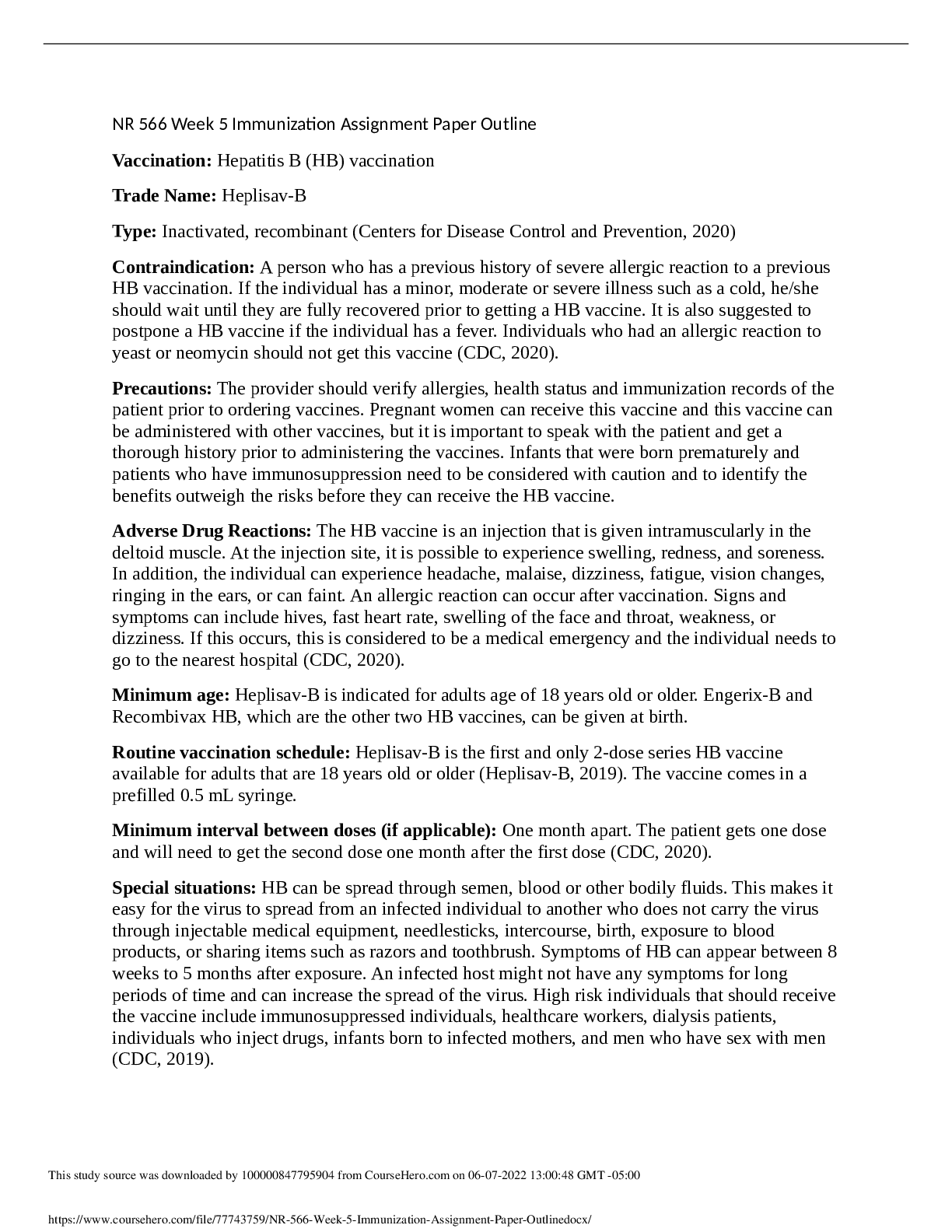

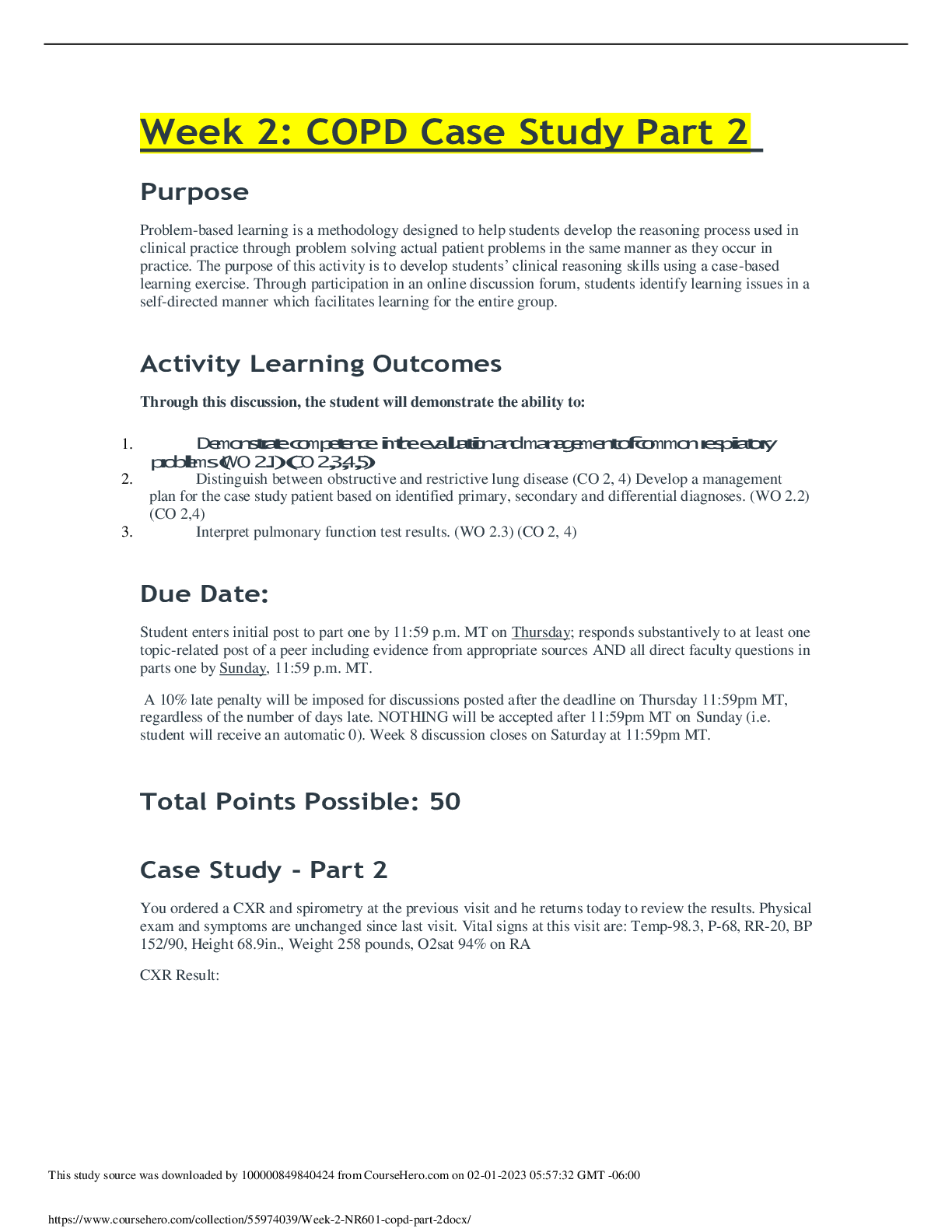
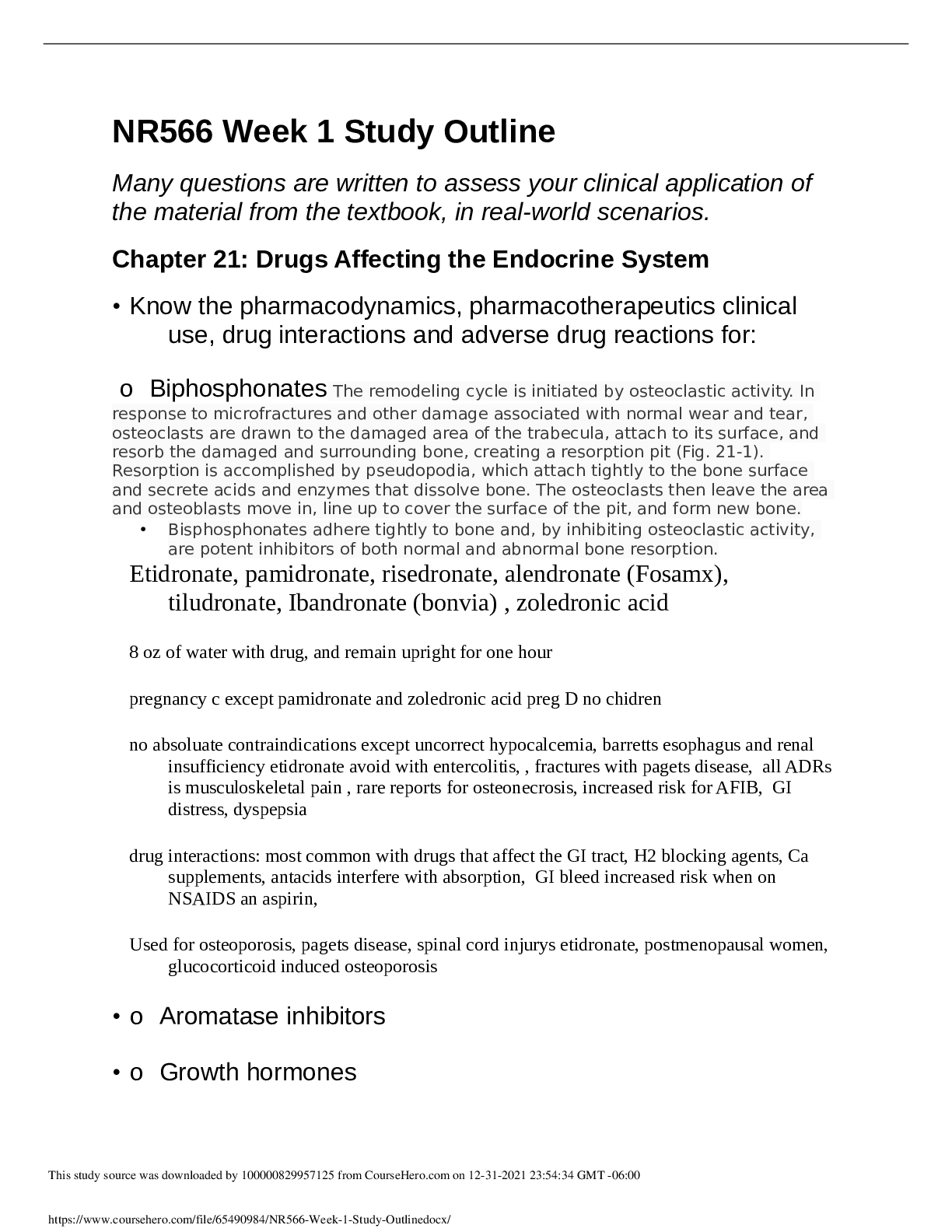

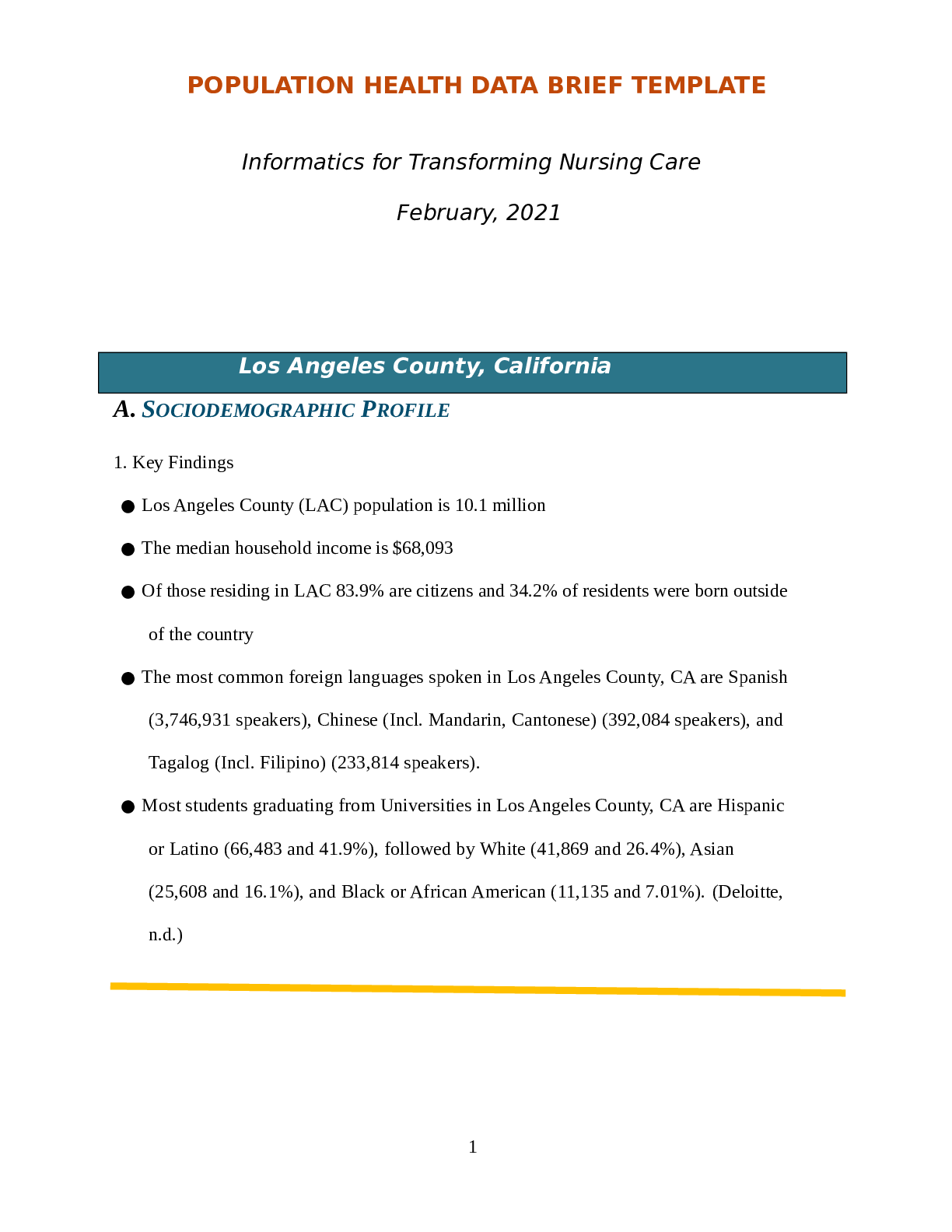

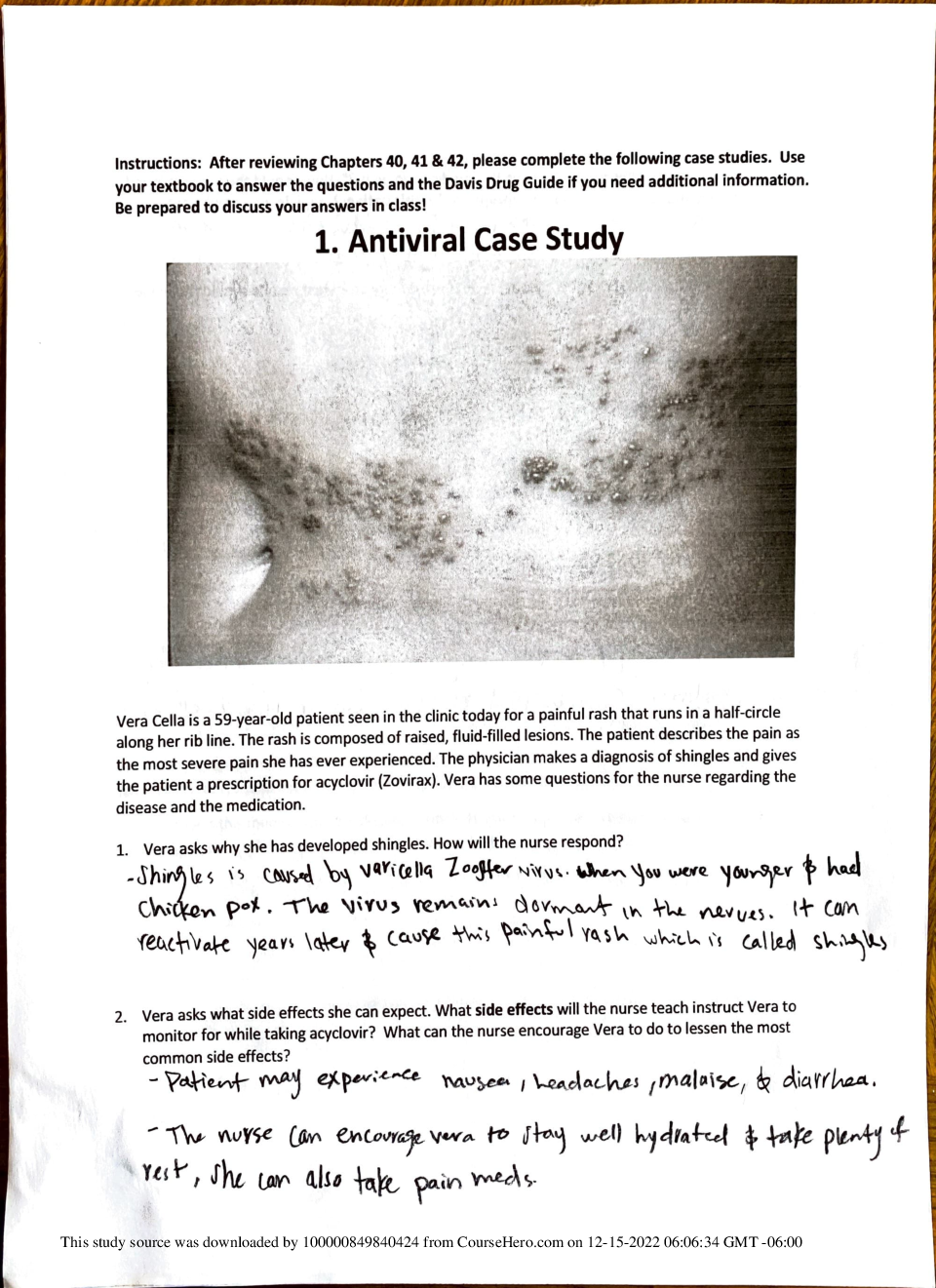


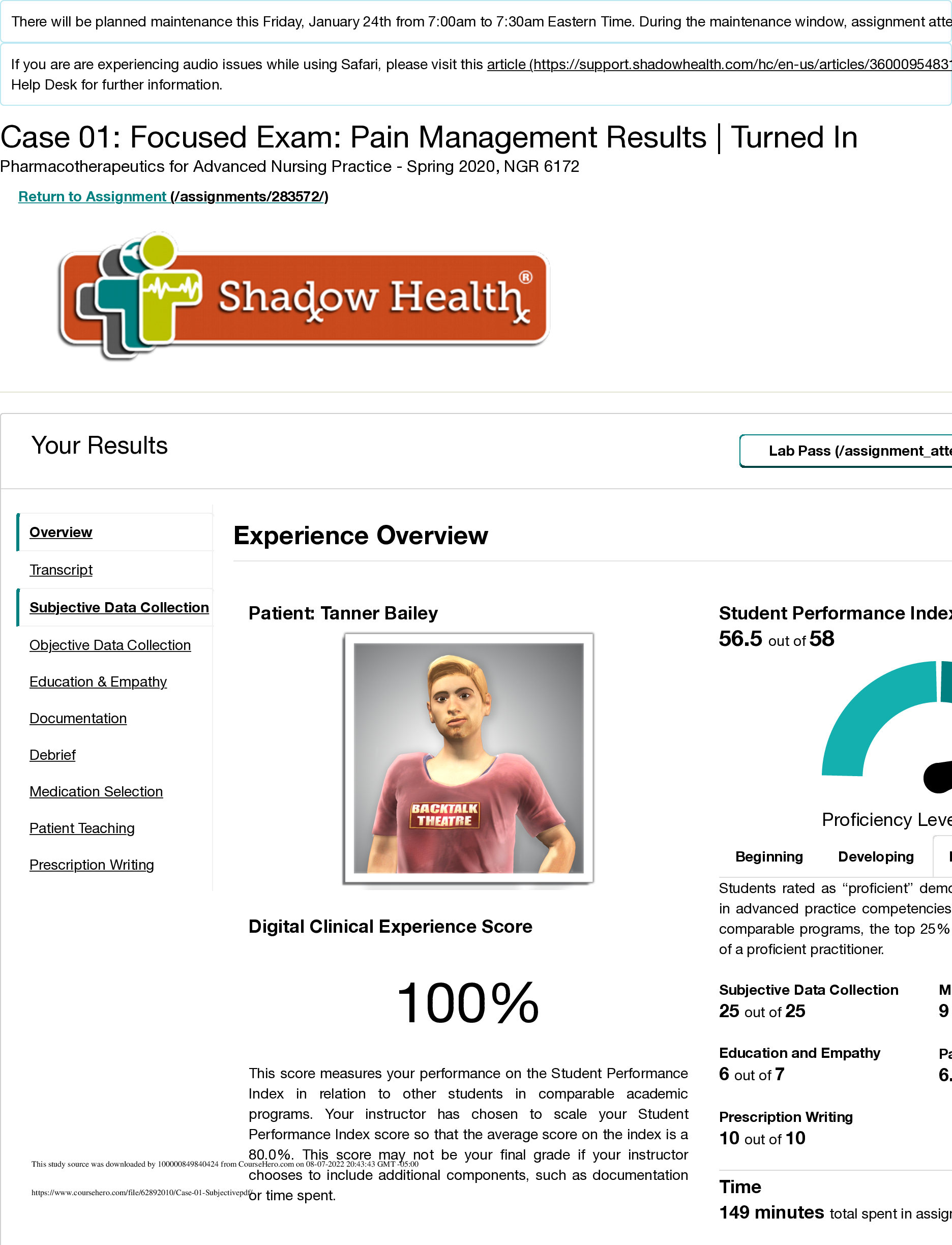
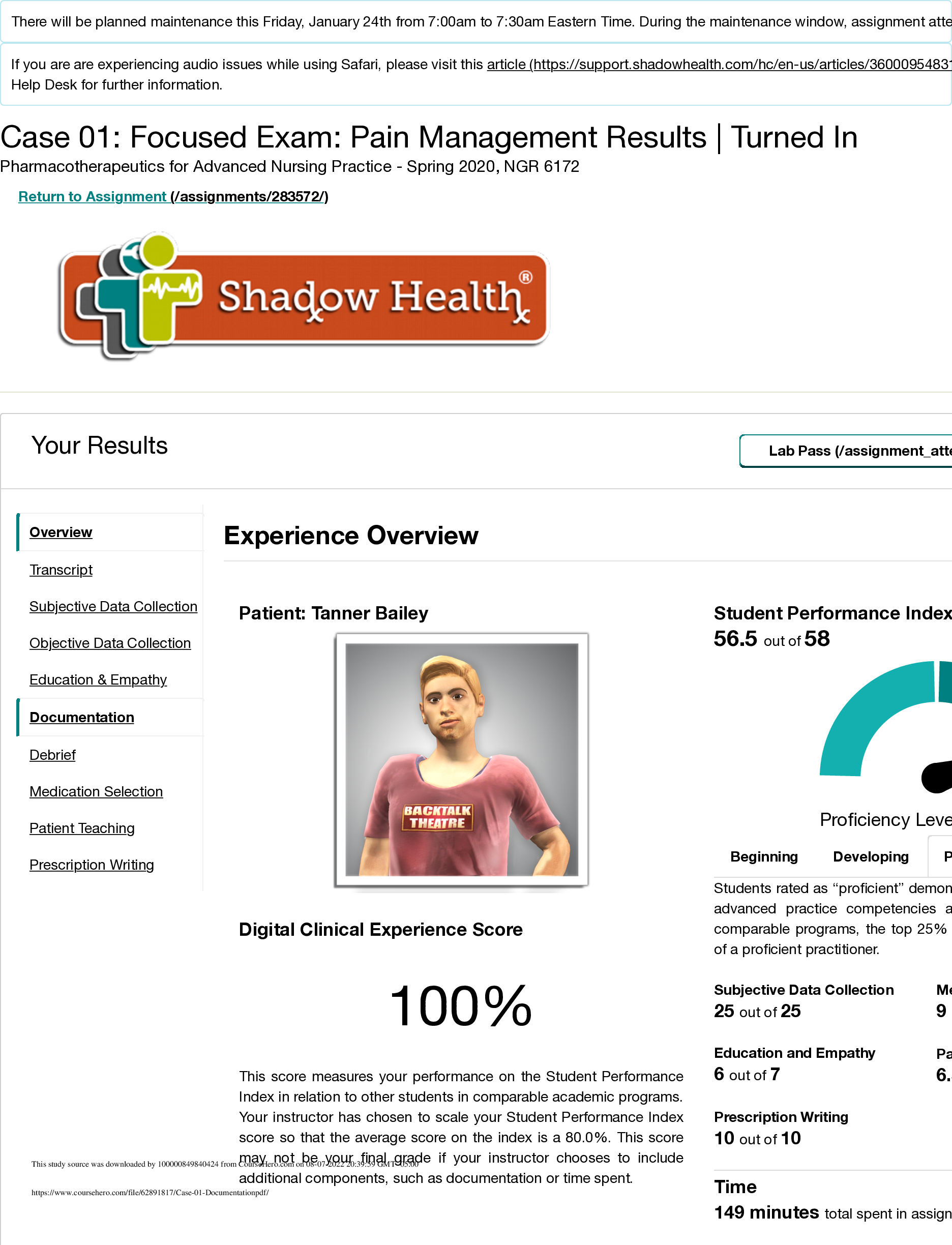

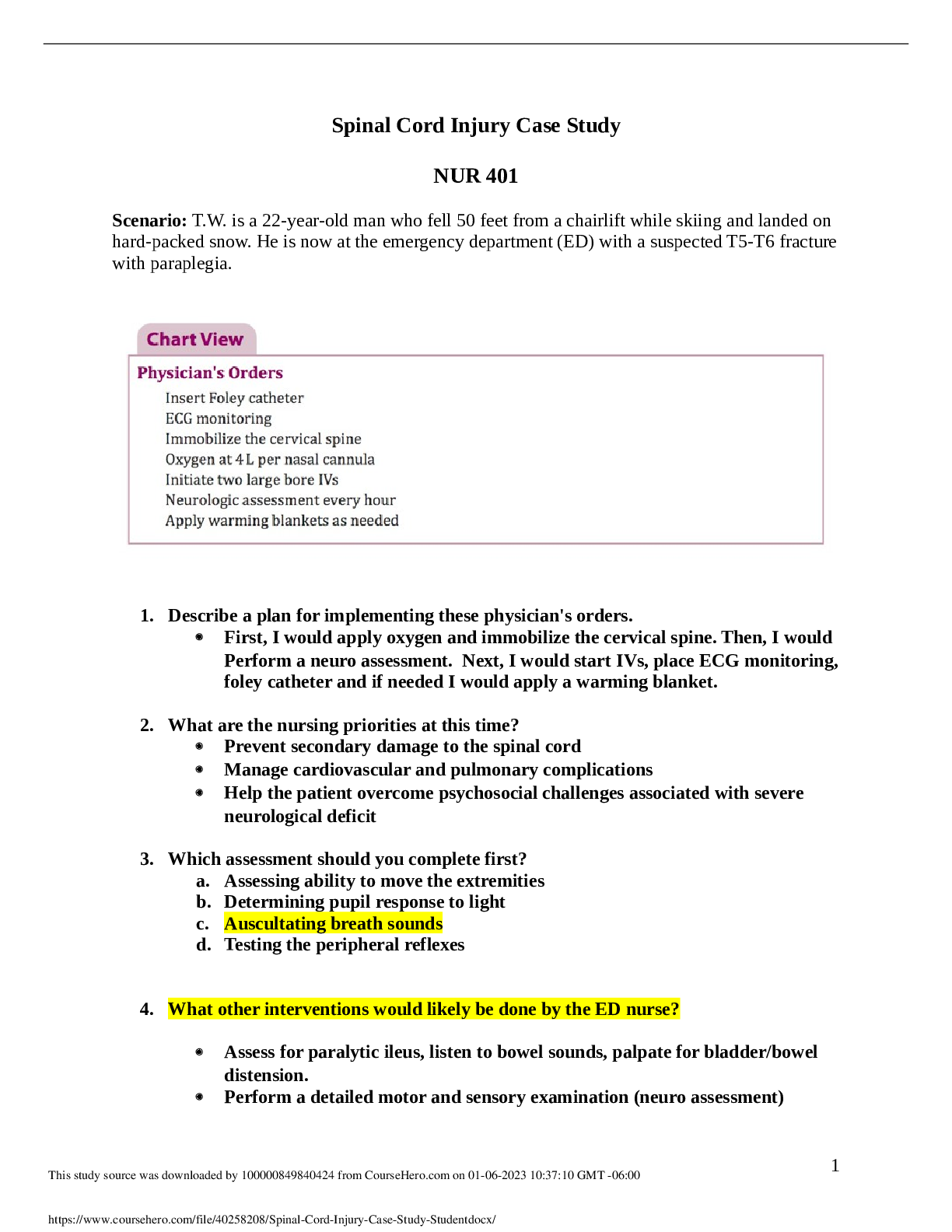
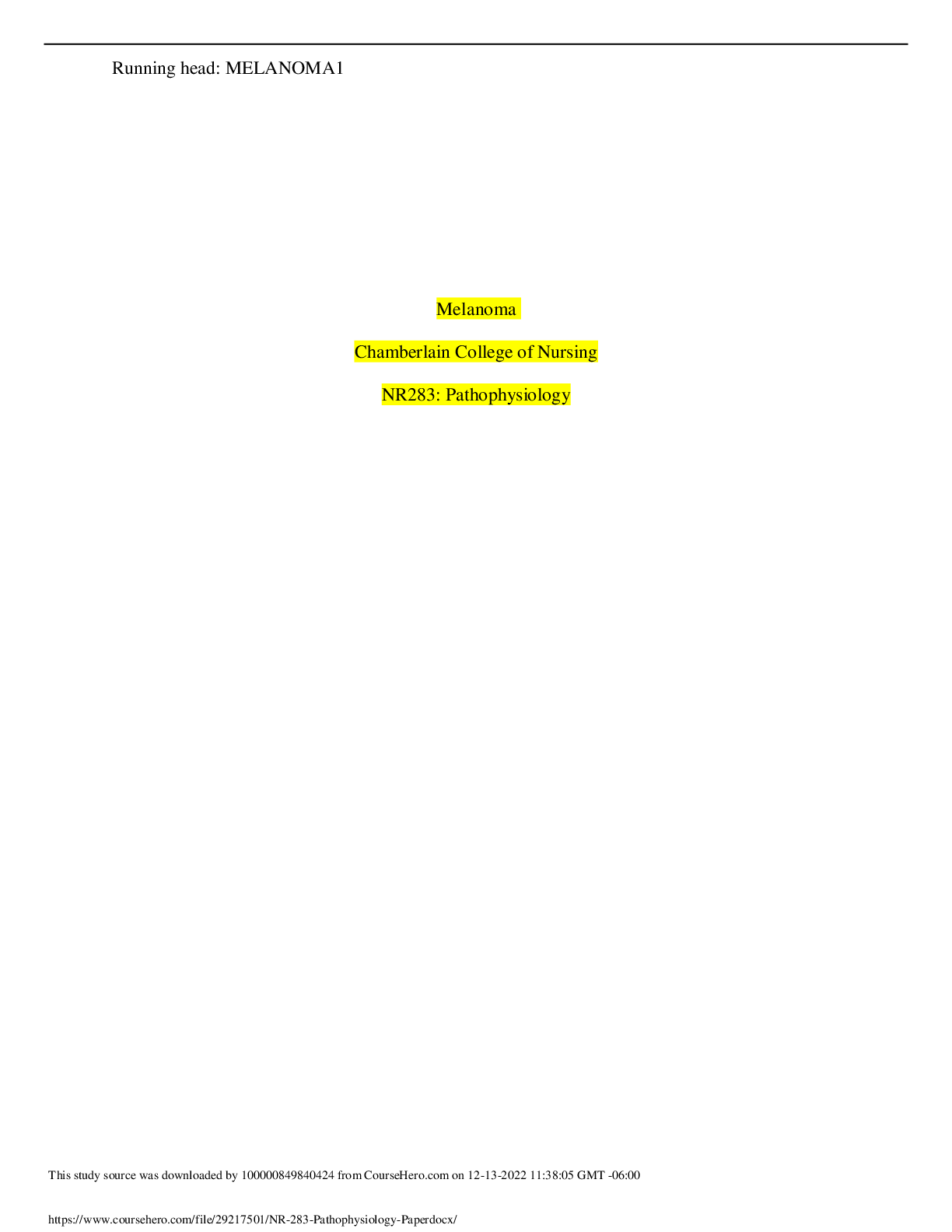
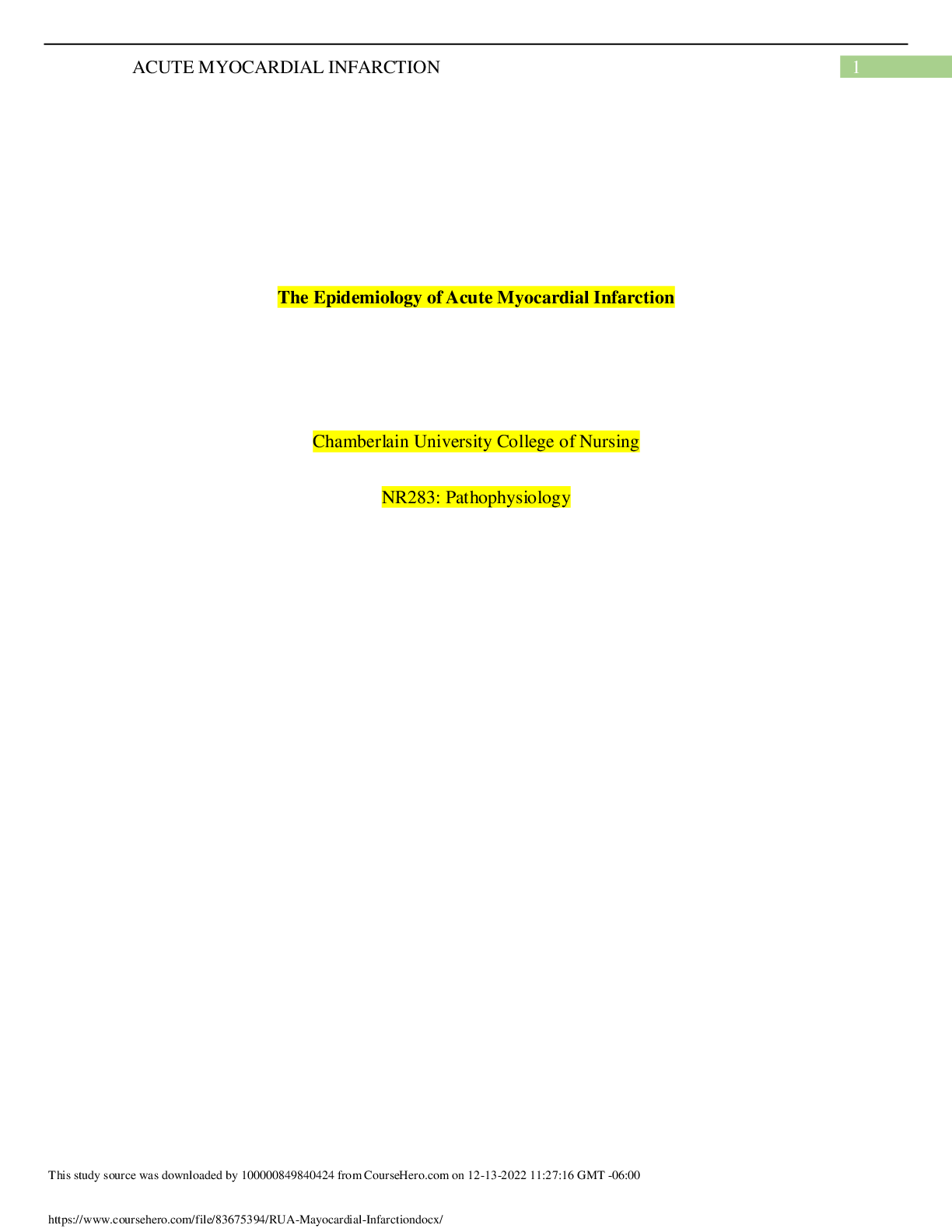
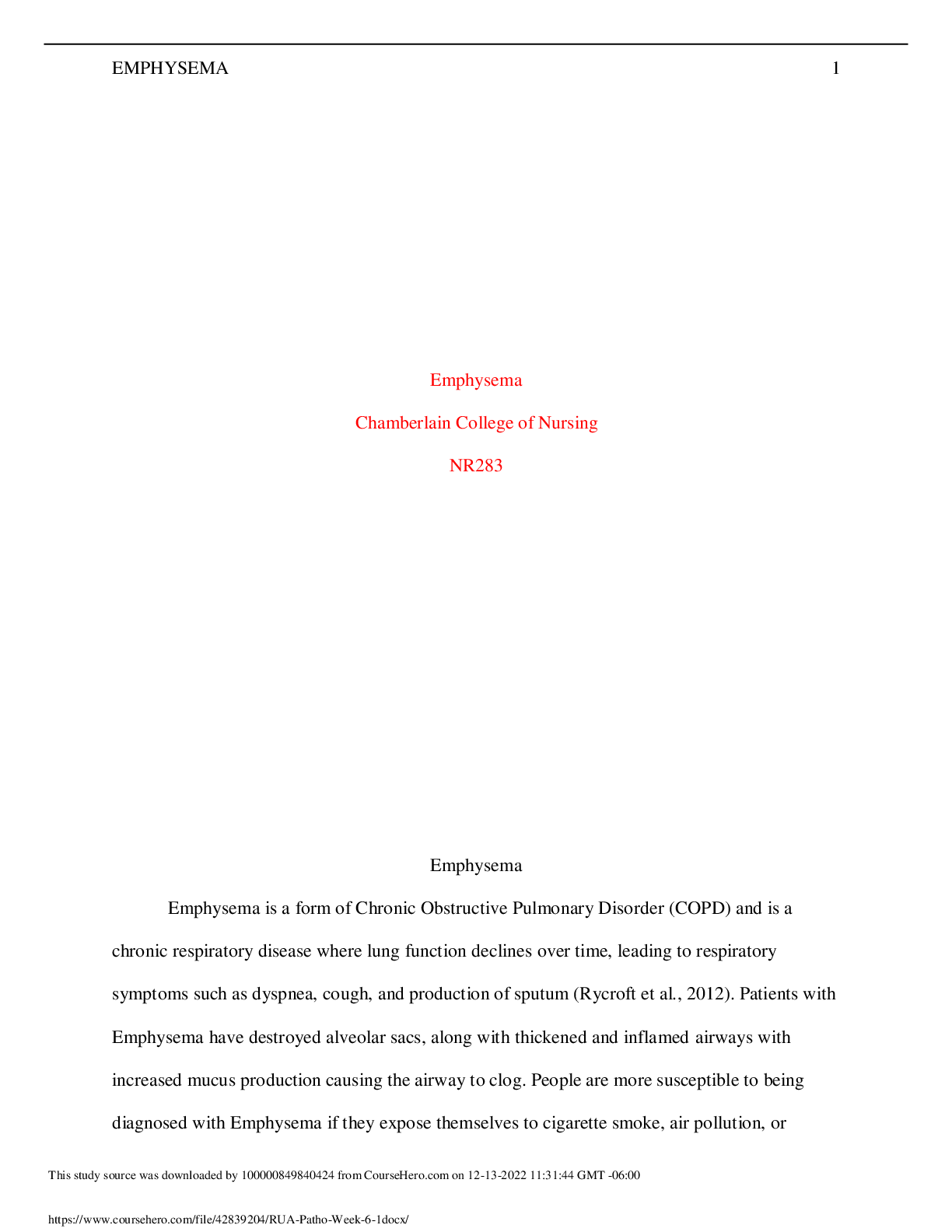
.png)
